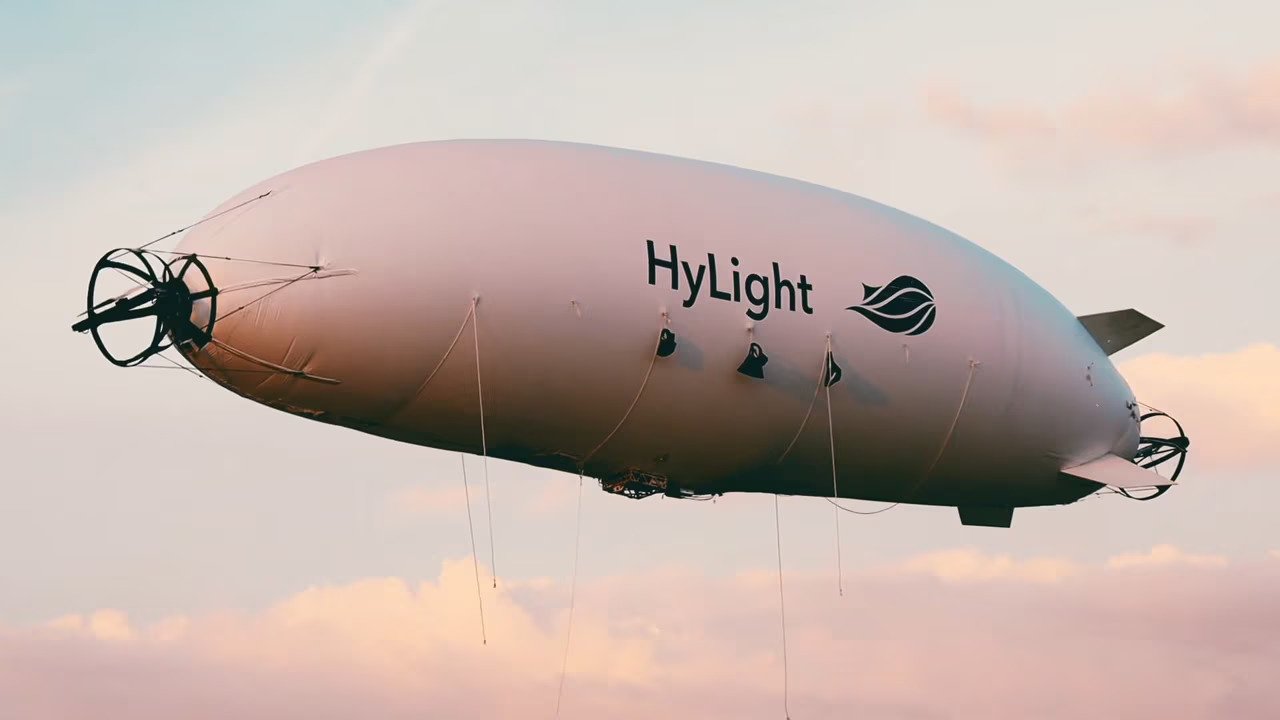Today, Hylight, a patented hydrogen-powered airship drone maker, has raised $4 million. It has developed a zero-emission way to inspect any infrastructure from the air.
Previous solutions were either costly and polluting (helicopters), not precise enough (drone planes and satellites), or needing more flight autonomy (quadricopter drones). In the meantime, methane leaks alone account for 4 per cent of global greenhouse gas emissions and annual losses of $7 billion in the European and North American markets... and counting.
Equipped with a hydrogen fuel cell, the HyLighter is a cross between drone and airship technology. Like a drone, it is easy to control and transport. It enables precise data collection over long distances in a sustainable way.
It integrates HD cameras and sensors (LIDAR, thermal, infrared, etc.) for optimal precision. It can detect previously uncollected data and can generate detailed reports and forecast plans to prevent breakdowns or accidents.
I spoke to Martin Bocken, co-founder and CEO, to learn more.
From idea to iteration in a matter of months
One of the most surprising things about HyLight is that it was founded in 2022. Since then, with an initial team of four, the French company has been able to get its aircraft literally off the ground and in front of potential customers.
This company is the poster child for design fast, build fast, deploy fast. Founded in 2022, it already has commercial pilot programmes for its aerial inspection tech.
Bocken recalled:
"In the beginning, we didn't want to make the perfect product, but we wanted to make a product that worked based on our capacity and money. When you create a company, you don't initially have much funding.
But our products' robustness increased over time, as did our knowledge.
And based on the capacity and, you know, the money we had.This mindset of iteration and building fast is very different from typical engineering development.
You need to authorise yourself to make mistakes, to do things that may not work and may fail.
And it's okay because you will learn a lot. We try to focus on ways to learn things and move fast by testing on the way."
Today, the HyLighter can be used for infrastructure inspection — HyLight has signed €100,000 in pilot contracts with foreign and local electricity operators and pipeline operators.
In the future, the HyLighter can observe forests to prevent fires or diseases, analyse changes in sea level, and understand the growing water stress affecting farmland.
An alternative to heavy hydrogen fuel cells
One standout feature of the HyLighter is that it is able to make hydrogen aviation work. The weight of hydrogen fuel cells has always been a pain point in aviation— "For one kilo of hydrogen, you have 20 kilograms of cylinders, "explained Bocken.
However, HyLight has solved the problem by removing the cylinders and storing the hydrogen directly inside the envelope (aka balloon). This is much lighter than air, allowing the airship to float and carry payloads aloft.
Hydrogen is used as both the lifting gas in the envelope and the fuel source. It enables the HyLighter to achieve exceptional endurance, allowing it to fly for up to 10 hours, over 350 km, at 35 km/hr.
Alumni of Y Combinator, HyLight has received support from Ring Capital, Kima Ventures, Collaborative Fund, Y Combinator, Marc Tarpenning, co-founder of Tesla, who also mentored HyLight along with former SpaceX launch director Abhishek Tripathi.
With the recent funding increase, HyLight is poised for significant growth. It will be able to launch its first large-scale operations, recruit specialists in aviation regulations, use embedded systems for controlling drones, use hydrogen fuel systems to power them, use mechanical engineering to improve their design, and use both industrialisation and software development expertise to ensure smooth large-scale production and operation.
Ultimately, this influx of talent will allow them to develop new and improved versions of their airship drones that meet the most rigorous international safety and production standards.
Lead image: HyLight. Photo: uncredited.



Would you like to write the first comment?
Login to post comments